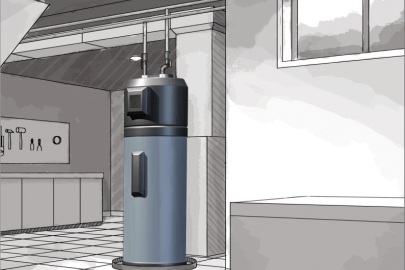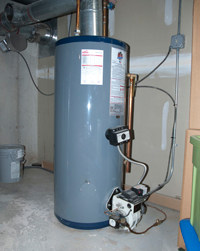Everybody has got their own unique way of thinking about Water Heater Maintenance Tips You Can't Afford to Forget.

Warm water is necessary for day-to-day convenience, whether it's for a refreshing shower or washing recipes. To ensure your hot water system runs successfully and lasts much longer, routine upkeep is key. This write-up offers practical ideas and insights on how to maintain your home's warm water system to prevent disruptions and pricey repairs.
Intro
Keeping your home's warm water system may seem challenging, but with a couple of simple actions, you can guarantee it operates efficiently for years ahead. This guide covers every little thing from understanding your hot water system to do it yourself maintenance ideas and knowing when to employ professional assistance.
Importance of Keeping Your Hot Water System
Normal maintenance not just expands the life expectancy of your warm water system however additionally ensures it runs efficiently. Ignoring upkeep can result in lowered efficiency, greater power bills, and also early failure of the system.
Indications Your Warm Water System Requirements Upkeep
Understanding when your warm water system needs focus can avoid significant problems. Watch out for indicators such as inconsistent water temperature, odd sounds from the heating system, or rusty water.
Understanding Your Hot Water System
Prior to diving right into upkeep jobs, it's helpful to comprehend the basic components of your hot water system. Usually, this consists of the hot water heater itself, pipelines, anode poles, and temperature controls.
Month-to-month Upkeep Tasks
Normal month-to-month checks can aid capture small issues before they intensify.
Purging the Hot Water Heater
Purging your hot water heater gets rid of debris build-up, boosting efficiency and extending its life.
Checking and Replacing Anode Rods
Anode rods avoid corrosion inside the tank. Evaluating and changing them when broken is critical.
Evaluating and Readjusting Temperature Level Setups
Changing the temperature level setups makes certain optimum efficiency and security.
DIY Tips for Maintenance
You can perform numerous maintenance tasks yourself to maintain your warm water system in leading problem.
Checking for Leakages
Regularly check pipelines and links for leakages, as these can result in water damage and greater expenses.
Evaluating Pressure Relief Valves
Examining the stress safety valve guarantees it operates properly and stops extreme pressure buildup.
Shielding Pipelines
Shielding warm water pipes reduces warmth loss and can conserve energy.
When to Call a Professional
While do it yourself upkeep is valuable, some problems need professional expertise.
Facility Problems Requiring Professional Aid
Examples include significant leaks, electric issues, or if your water heater is consistently underperforming.
Regular Expert Maintenance Perks
Expert upkeep can include extensive inspections, tune-ups, and making certain compliance with safety and security requirements.
Conclusion
Normal maintenance of your home's warm water system is necessary for efficiency, long life, and cost financial savings. By following these pointers and knowing when to seek expert help, you can make sure a dependable supply of warm water without unexpected interruptions.
Water Heater Maintenance: The Basics
Maintaining your water heater will ensure it operates efficiently and has a longer lifespan. Neglecting regular maintenance can lead to costly repairs and an even bigger chunk of your savings if you have to replace it sooner than necessary. But there’s good news: Most water heater maintenance tasks are relatively simple and easy for homeowners with basic DIY skills.
Flush the Water Heater
Over time, sediment and minerals can build up in the tank, reducing its efficiency and potentially causing damage. To flush the tank, turn off the power or gas supply, attach a hose to the drain valve near the bottom and open the valve to drain the water until it runs clear. Ideally, flush the tank annually.
Replace the Anode Rod
The anode rod is a sacrificial metal rod that helps prevent corrosion inside the tank. Inspect and replace it every three to five years or per the manufacturer's recommendation. To replace the anode rod, turn off the power or gas supply, drain a few gallons of water from the tank, unscrew the old rod and replace it with a new one. If the anode rod is significantly corroded or covered in calcium buildup, it's a sign the water heater may need to be replaced soon.
Tune-Up
A yearly tune-up can help identify potential issues and ensure your water heater operates at peak efficiency. This typically involves checking the thermostat, burner assembly (for gas heaters) and any other components specified by the manufacturer. During a tune-up, the technician may also clean the burner and adjust the pilot light (for gas heaters) or examine the heating elements (for electric heaters).
How to Maintain Your Water Heater
- Insulate the tank. Insulating the tank can improve energy efficiency and reduce heat loss, saving you money on energy bills. You can purchase precut insulation blankets designed specifically for water heaters or use standard fiberglass insulation wrapped securely around the tank.
- Check the temperature. The recommended water temperature for most households is around 120 degrees Fahrenheit (49 degrees Celsius). Higher temperatures can increase energy costs and potentially cause scalding. Use a kitchen thermometer to check the temperature at the faucet nearest the water heater.
- Monitor water pressure. Excessive water pressure can strain the water heater and cause leaks or even tank failure. Install a pressure-reducing valve if necessary. The ideal water pressure range is between 60 and 70 PSI (pounds per square inch).
- Test the temperature and pressure (T&P) relief valve. The T&P relief valve is a safety feature that releases pressure if the tank gets too hot or the pressure builds up too high. Test it annually by lifting the lever and allowing a small amount of water to release. Replace the valve if it doesn't release water or reseal properly.
- Check for leaks. Regularly inspect the tank, pipes and fittings for leaks or corrosion. Deal with issues promptly to prevent further damage. Even a small leak can lead to significant water damage over time.
- Consider a tankless water heater. If your traditional tank-style water heater is nearing the end of its lifespan ( typically 10 years), consider replacing it with a tankless water heater. These units heat water on demand, reducing standby energy losses and potentially saving you money on your energy bills.
- Schedule professional maintenance. While homeowners can perform many water heater maintenance tasks, it's still a good idea to schedule professional maintenance every few years. A plumber or HVAC technician can thoroughly inspect the unit, identify potential issues and ensure it operates safely and efficiently.
https://www.homeserve.com/en-us/blog/home-improvement/hot-water-heater-maintanence/

I am just very interested by Tips For Maintaining Your Hot Water Heater and I am praying you enjoyed reading our post. Are you aware of another individual who is enthusiastic about What Kind of Maintenance Do Water Heaters Need?? Do not hesitate to share it. I take joy in your readership.
Schedule A Service Call
Comments on “Making Sure Durability of Your Home's Hot Water System: Maintenance Tips”